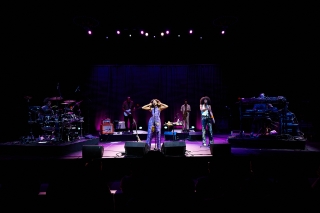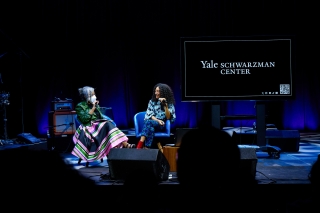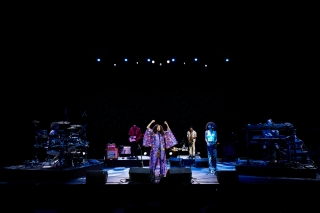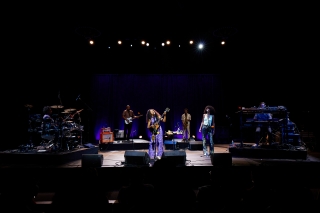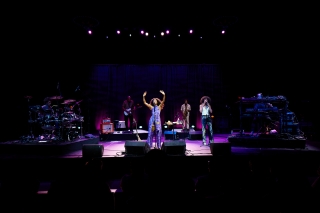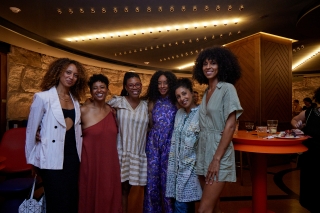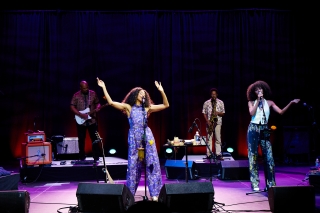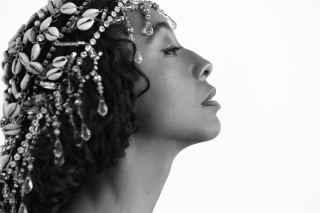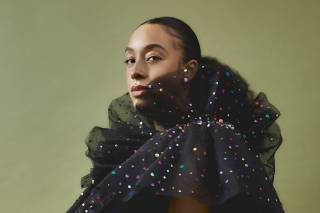“Harriet Jacobs was a girl born in enslavement in 1813,” begins Corinne Bailey Rae, holding the audience rapt and silent. “In her early 20s, she escapes her abusive master and hides out in the crawl space above her grandmother's storehouse. Through a loophole in the wall, she can see the people pass by, she can see her children and grandchildren grow up. Eventually, she attains freedom and sets up a school for Black children... I was so inspired... So, I wrote a song about what the sunset looks like from her loophole. This is called Peach Velvet Sky.”
As the audience takes a collective breath in, Rae begins to sing, dazzling New Haven with a sneak preview of her upcoming fourth album “Black Rainbows” at an oversold Yale Schwarzman Center show on Saturday night. Inspired by the objects and artwork collected by Theaster Gates at the Stony Island Arts Bank in Chicago, “Black Rainbows” explores Black femininity, Spell Work, Inner Space/Outer Space, time collapse, ancestors and music as a vessel for transcendence.
The two-time Grammy® award winner crisscrossed through musical genres—jazz, punk, R&B, sweet ballads, pounding exorcizing rhythms—as she weaved a complex tapestry of Black history and expressionism into her music.
